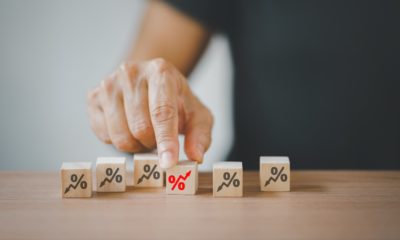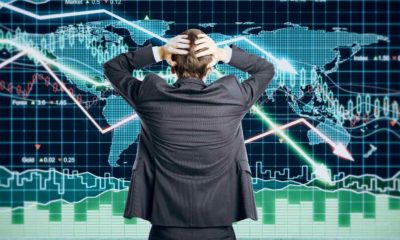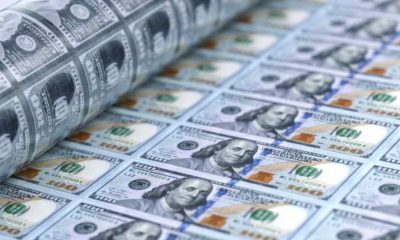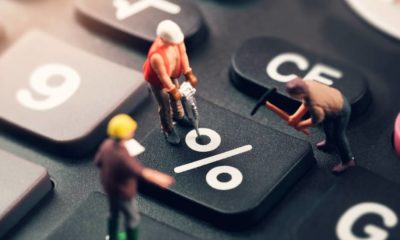Economy
Is Wall Street Overheating?
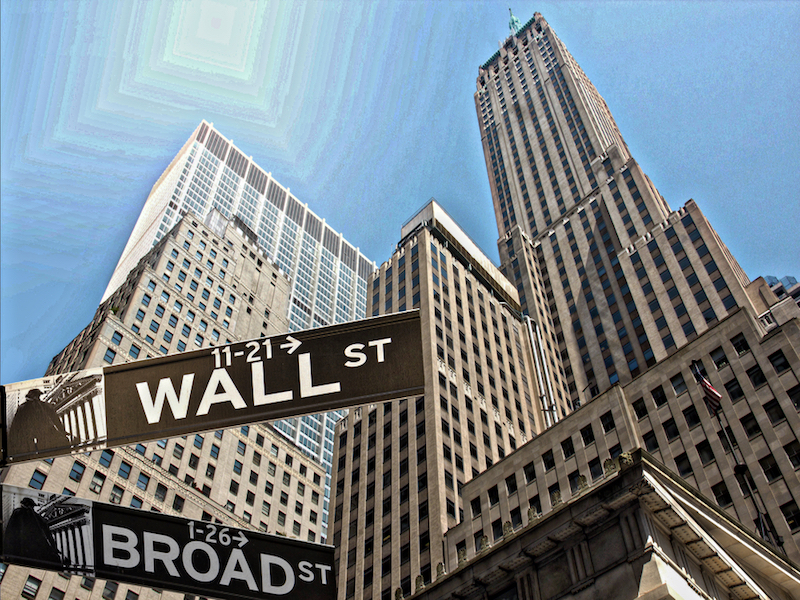
Many expressions describe a heated situation: if you can’t stand the heat, get out of the kitchen; some like it hot; it’s getting hot up in here.
They are all in our vocabulary for a reason – people can gauge when an atmosphere has become slightly to exceedingly warm.
Is this what is happening on Wall Street?
And what are the causes for this temperature climb that might lead to a melting down?
The Dow Industrial charts have shifted into warp drive.
As can be seen below, the period that is under view here is September 2015 to this month, July 2016.
This profile very much meets the criteria for a hyperdrive shift.

Some signs of agitation are beginning to be felt on Wall Street in the wake of these new moves.
In fact, the chart above could very much be a mirror of the sense of concern felt by analysts and investors.
More than a few Wall Street strategists and analysts have voiced words of caution over the past few days.
This is a pattern that lends itself to various degrees of unsettling worry.
Some of these trends are:
- Equities are climbing ever higher
- All signs point to the market rapidly becoming overheated.
The Dow Jones Industrial Average (also known as DJIA, the Industrial Average, the Dow Jones, ^DJI and just, the Dow) is one of the indices that was created by the Wall Street Journal editor and Dow Jones & Co co-founder, Charles Dow, over one hundred years ago.
It is currently owned by S&P Dow Jones Indices.
It calculates the sum of all the component prices divided by a divisor – that changes whenever one of the component stocks have a stock dividend or a stock split.
Last Wednesday the Dow Jones Industrial Average recorded a seventh highest close ever logged in succession.
And according to the data on file at Dow Jones, this will make it the longest run of continuous closing highs since the March 15, 2013, eight session run.
This run was not confined to the DJIA, however.
- Blue chip gauge recorded a ninth gain in a row for consecutive sessions
- COMP, +0.52% (Nasdaq Composite Index) ended trading with an all new highest level for 2016.
- [ms_divider style=”normal” align=”left” width=”100%” margin_top=”30″ margin_bottom=”30″ border_size=”5″ border_color=”#f2f2f2″ icon=”” class=”” id=””][/ms_divider][ms_featurebox style=”4″ title_font_size=”18″ title_color=”#2b2b2b” icon_circle=”no” icon_size=”46″ title=”Recommended Link” icon=”” alignment=”left” icon_animation_type=”” icon_color=”” icon_background_color=”” icon_border_color=”” icon_border_width=”0″ flip_icon=”none” spinning_icon=”no” icon_image=”” icon_image_width=”0″ icon_image_height=”” link_url=”https://offers.thecapitalist.com/p/58-billion-stock-steal/index” link_target=”_blank” link_text=”Click Here To Find Out What It Is…” link_color=”#4885bf” content_color=”” content_box_background_color=”” class=”” id=””]This one stock is quietly earning 100s of percent in the gold bull market. It's already up 294% [/ms_featurebox][ms_divider style=”normal” align=”left” width=”100%” margin_top=”30″ margin_bottom=”30″ border_size=”5″ border_color=”#f2f2f2″ icon=”” class=”” id=””][/ms_divider]
On viewing the chart below, it can be seen that the Nasdaq Composite Index has maintained continuous high closing levels.

Finishing at a record level of 2,175.03 last Friday, the S&P 500 Index had a wider stock market retreat in the prior session.
Not exactly word on the street, but an opinion and voice that is clocked as a potential crowdsource opinion, by analysts and investors on Wall Street: Dr. Lev Borodovsky, who writes on the current financial newsfeed website The Daily Shot, refers to CNN’s index of “fear and greed.”
This sounds like a movie title but is used to show that greed is approximately at a two-year high.
The chart below is an indication what is the driving motivator in the markets currently:

Dr. Lev Borodovsky indicates that with greed levels running so high, it could mean that the market is possibly unaware that it is overextended and has become alarmingly complacent.
It would follow, that from this posture, the market would be in a bad position and under prepared to handle a shock fall or rapid market adjustment.
Wall Street has its gauge of fear too.
The CBOE VolatilityIndex (5.65%) is one of the key measures of the expectations in the market for the near term volatility conveyed by the S&P 500 SIO prices.
Other measures of volatility are being referenced as also showing signs of extended exuberance.
Greed and Fear indices are the two emotional states that are intrinsic when relating to the subject of the unpredictability of the stock market.
The vulnerability that is linked to those two states can be as a result of investors having a small comfort level because of market instability.
Or maybe, in this case, having too much comfort and confidence.
Both emotions, without oversimplification of the facts, can have a total and deleterious effect on both the stock market and investors portfolio.
Tom McClellan, another well-known market technician, stated in a post last Tuesday, that a potential “Fourteen-day choppiness Index” which tracks the profile of a short term trend, indicates that Wall Street uptrend may be getting tired.
He goes on to further explain that any extremely linear path for the index will imply that the current trend is perhaps likely to end shortly.
But when choppier and more volatile action occurs, it, of course, will suggest the opposite.
The 14-day Choppiness Index is reprinted below:

The small reading that can be seen above in Tom McClellan’s index shows a relatively straight line and linear movement.
His Choppiness Index, at present, is at the lowest level recorded for the last two decades.
What Tom McClellan goes on to say in his July 19, 2016, post re the volatility measure – is that the readings last Monday were at the lowest ebb since February 12, 1996.
And the instance in 1996 marked a price top not attained again until three months after.
Upward or downward linear trends are exhausting.
They require a lot of energy from either a bearish market or a bullish market for everything to stay information and step.
The natural state of the markets is to drift towards entropy, so brief interludes like this trend towards the extreme organization, cannot last for long.
The upshot of all this in McClellan’s opinion is that things will snap back lower soon.
He maintains a relatively bullish long term and an average outlook for stocks.
Another financial commentator who also is a graduate school finance professor, both at New York University and Georgetown University, Salil Mehta, posts that the further the Wall Street’s fear gauge falls below 12 – the higher the probability is that stocks will fall alongside.
Flicking back to the VIX (CBOE Volatility Index) at 11.77, they say it is approaching a near one-year low.
The chart below displays this small point:

The graph that Mehta’s uses indicate that at current levels:
- There is about a 20% chance that the market will go lower
- The market is now more susceptible to falling.
He goes on to say that it is dangerously close to the floor, but probabilities are higher that it won’t go lower on VIX but may instead spike up on a risk-off day at 11 on the VIX.
That is a relatively mysterious way of saying that there is a higher chance of a further drop NOT occurring.
It goes without saying, that record highs for stocks make investors and analysts nervous.
This is exacerbated by the persistent concerns about global growth in the wake of the shock Brexit results and the departure of the United Kingdom from the European Union.
In the ensuing market upheaval, $12 trillion in government bonds were pushed into negative yield territory.
This was documented by Fitch Ratings.
This whiplash action for stocks trending from the Brexit reaction doldrums to the now record highs has resulted in a few nagging doubts in the minds of many investors.
A Bank of America Merrill Lynch monthly fund manager survey recently recorded that investors are benching the highest proportion of holdings in cash funds since 2001 (approximately 5.8%).
Chief market strategist for Asbury research, John Kosar, said on Wednesday that although he does not see on long term pull back destined for equities, the market is, however, due for a retreat.
He goes on to further state that this is exemplified by the Chicago Board Options Exchange put/call ratio and the VIX.
These are a measure of both bearish and bullish bets that are on the market.
Kosar predicts that the five-day moving average of the put/call ratio shows signs that the market is becoming less bearish.
This trend tends to precede a market downturn.
Bull Market Supporters
Not all Wall Street observers are expecting the sky to fall just yet.
Some are even predicting that markets will make a powerful move even higher.
BTIG market technical analyst Katie Stockton, stated in a research note last week, that the S&P 500 index SPX, +0.46% is one step away from actualizing a long term trend that may see it break out to 2,400.
She has been waiting for the large cap gauge to be registered 2 Friday closes above 2,135.
This is likely to happen soon, given its 2,173 close last Wednesday.
To be sure, chief market strategist at New Albion Partners, Brian Reynolds, follows a different opinion by making the case that most investors are shoveling up protection against a possible market fall.
It is not able to be seen how massive the market stumble could be at this point if it happens at all.
This is the reason why prices are being driven higher in three-month VIX futures.
Is this a display of caution?
Or is this fear that the future is indeed holding some sudden monster crash?
Crowded bets are driving VIX futures higher, and that may just force bears to concede, especially if the record rises for stocks continue unabated.
Reynolds goes on to say that bearish investors now pay over 50% extra for 3-month protection as opposed to what is paid for the spot VIX.
That is an enormous premium to pay for just the thought that there is a possibility that things may go wrong.
But could a reluctance to spend this extra protection end in artificially buoying up the stock market?
On the charts that Reynolds’ uses for his analysis, the three-month futures for the volatility gauge and spot price for VIX are shown to be at their widest levels.
Looking back to 2012, 2013 and 2014 – expected disasters did not materialize then either.
So, while the spread could increase shortly, it is highly unlikely to persist for more than a month or two.
This is because of the costs that are involved, as was made clear above.
When the hammer does not fall, bearish investors are likely to cover their positions in the out months.
And bears will have to go into hibernation for a while.
Some analysts and investors have taken a more measured approach to the recent stock elevations.
Nicholas Colas, the Chief market strategist at Convergex, said last Wednesday that all of the hyperventilation and concern about a possible fall in stocks on the back of the fact that records are being hit daily does not necessarily guarantee that the S&P 500 and the DJIA will follow suit and trade lower.
Colas calls it the “Monte Carlo fallacy” as there is no predictability in a coin toss or spin of the wheel.
All probabilities start at zero.
So whether some trends have been predicted in the past, it does not follow, in the law of averages, that any expected fall of the dice can reflect an expected result.
As seen in the vast variety of opinions flying around Wall Street at the moment, the reliability of this recent run in stocks can serve as absolute confirmation that few strategists and pundits know with any certainty, exactly where the market is heading.
So there is no real reason to get out of the kitchen because of the heat just yet.

